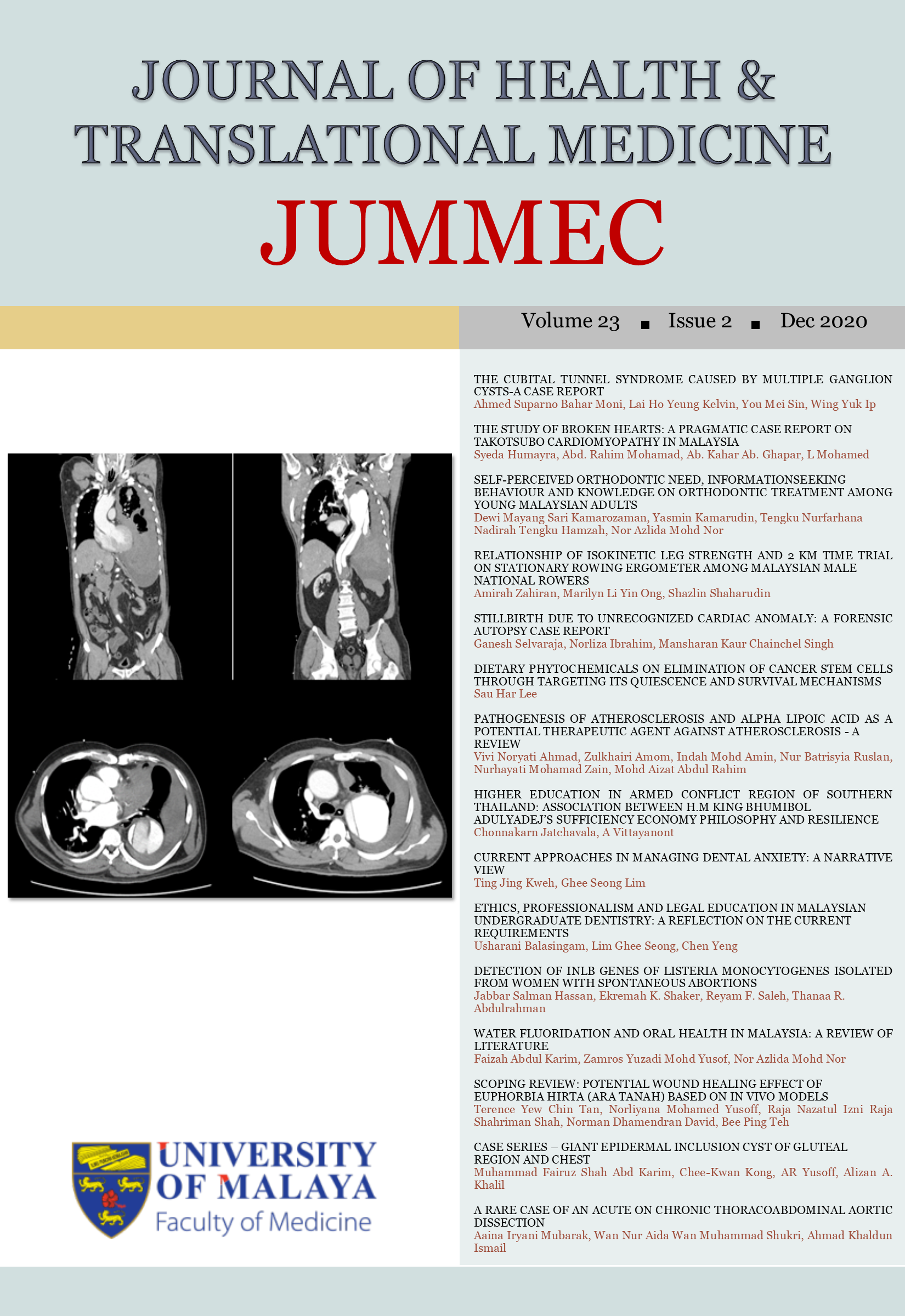WATER FLUORIDATION AND ORAL HEALTH IN MALAYSIA: A REVIEW OF LITERATURE
Received 2020-02-22; Accepted 2020-09-15; Published 2020-12-14
DOI:
https://doi.org/10.22452/jummec.vol23no2.12Keywords:
Dental Caries, Fluorosis, Malaysia, Review, Water FluoridationAbstract
Information regarding water fluoridation (WF) in Malaysia has been substantially documented, but is scattered in various government publications and may be lost to the stakeholders. This paper is a review of water fluoridation in Malaysia and its effect on oral health: a history of WF in Malaysia, the current policy, the evidence of its effectiveness, the challenges and the future directions. A search for relevant physical and electronic documents of WF in Malaysia resulted in the identification of 70 documents for review. WF was gazetted as national policy with an optimal fluoride level of 0.7 parts-per-million (ppm) in 1972, with a reduction of the level to 0.5 ppm in 2005. Evidence showed that WF effectively reduced population dental caries while fluorosis was not a prevalent public health concern. Strong collaboration between stakeholders and the extensive network of piped water supplies resulted in 80% of the population receiving WF in 2013. However, the coverage was reduced to 74.1% in 2018, largely due to the cessation of WF in Pahang. The key challenges in WF included a lack of funding, weak legislation, use of reverse osmosis water filtration system, difficulty to maintaining an optimal level of fluoride in the water, and lack of local data on the impact of WF cessation on oral health, and its cost-effectiveness. This review will provide dental health professionals with scientific evidence on WF and oral health in Malaysia and assist them in answering relevant questions about WF raised by the public.
Downloads
Downloads
Published
Issue
Section
License
All authors agree that the article, if editorially accepted for publication, shall be licensed under the Creative Commons Attribution License 4.0 to allow others to freely access, copy and use research provided the author is correctly attributed, unless otherwise stated. All articles are available online without charge or other barriers to access. However, anyone wishing to reproduce large quantities of an article (250+) should inform the publisher. Any opinion expressed in the articles are those of the authors and do not reflect that of the University of Malaya, 50603 Kuala Lumpur, Malaysia.


